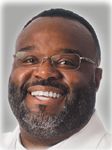Article
What's the one piece of equipment you can't live without as a urologist?
Three urologists share their favorite instrument used in their practices.

If you do see a tumor, you have a better idea how to approach it; you have time to think about it before surgery, as opposed to just going in. I can tell the patient exactly what needs to be done. The cystoscope, for me, is vital."
Derrick Reedus, MD
Athens, OH

We've had the new unit for about a year. It just lets us see so much more, allowing us to make decisions on the spot rather than the patient needing to leave the office and go to a radiology office.
We can make some decisions in the office, just based on the new ultrasound equipment.
With the scanners we used to have, the images were really grainy. We could perform a prostate biopsy, but it was very hard to see any hypoechoic lesions in the prostate, whereas now we can see more so we can target our biopsies. It used to be only 5% to 10% of the time we could see a lesion; now, it's upwards of 30% to 40% of the time.
For the patient, it helps with less discomfort, and for cancer detection, we can target our biopsies more accurately."
Brian Lane, MD, PhD
Grand Rapids, MI
"In my practice, the EMR. I'm an integrated physician, so my practice is linked up with a large community group of physicians. If the computer/IT system is down, I just tell everybody to go have lunch because we can't practice medicine without it.
I have no paper chart; I don't have a shred of paper in my office that would tell me what to do for the patient without the computer.
It's the way of the world; we might as well get used to it. I like it because when I was on paper charts, I could go 6 months without seeing a patient, look back at my own handwriting, and not know what was said-and that was my handwriting, let alone somebody else's. The EMR is always legible."
Brian Link, MD
Oklahoma City





